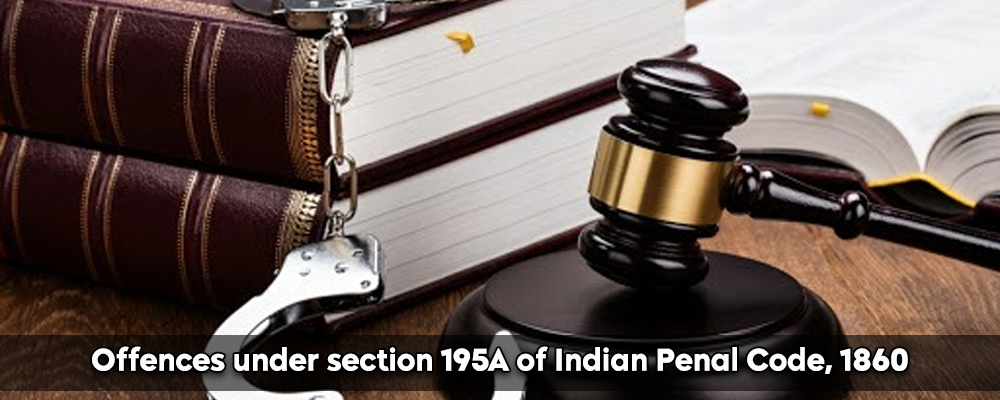Every form of legal proof that is admissible during a trial and designed to persuade the judge and/or jury of purported material facts of the case is known as evidence. Any statement made under oath that the court requires or permits and any document that is presented in accordance with its instructions constitute evidence. Section 3 of the Indian Evidence Act states that: Oral and Documentary Proof False evidence is information presented in court that is either known to be false or may be suspicious of being untrue. Any physical or intangible proof given to prove a crime is considered criminal evidence.
The Indian Penal Code Amendment Act of 2006 adds Section 195A. The conduct must amount to a threat against another’s person, reputation, property, or anybody else in whose person or reputation the threatened party has an interest (such as relatives or friends). The accused should have the purpose of presenting false testimony.
Need A Legal Advice
The internet is not a lawyer and neither are you. Talk to a real lawyer about your legal issue

Anyone who threatens another person with harm to their person, reputation, property, or the person or reputation of anyone in whose affairs they have an interest will be punished with imprisonment of either description for a term that cannot exceed seven years, with a fine, or with both. If an innocent person is found guilty and sentenced as a result of such false evidence, they will also be punished with death or imprisonment for a longer period of time.
In accordance with Section 195-A of the Indian Penal Code, giving false testimony can result in a sentence of up to seven years in prison, a fine, or both. If the use of false testimony results in the conviction and sentencing of an innocent person, the accused will still be held accountable for their actions as if they had been found guilty of the crime in question.
Case Law
It was determined in the case of Izhar Hussain v. Santokh Singh that in rape cases, test parade identification is often used to identify the accused by the victim, and that if the victim lied and offered a false identity a false statement that he was the accused, it is a violation of Sections 192 and 195.
In the case of Salib v. State of U.P. & Ors., The Supreme Court ruled that Section 195A of the Indian Penal Code would not apply if someone was threatened to withdraw a complaint or FIR or settle the disagreement. The Allahabad High Court’s ruling in a case filed under Section 506 of the IPC was being appealed before the bench of Justices B.R. Gavai and J.B. Pardiwala. The FIR has been challenged by the appellant.
In this case, the victim, namely Husna (respondent No. 3), had earlier lodged a FIR for the offences punishable under Sections 376D, 323, 120B, 354A, and 452 resply of the IPC and under Sections 7 and 8 resply of the Protection of Children from Sexual Offences Act, 2012, against Haji Iqbal @ Bala (father-in-law of the appellant), Mehmood, Javed, Alishan, Afjal, and Dilshad.
The bench observed that, upon a simple reading of the FIR and the additional testimony of the first informant, including the account of the so-called eyewitness, none of the elements constituting the offence punishable under Section 195A of the IPC are disclosed. The first informant was allegedly threatened and coerced into withdrawing her first complaint, which was filed for offences covered by Sections 376D, 323, 120B, 354A, and 452, respectively, of the IPC. Nothing suggests that the first informant was intimidated by the defendants with the intention of having the first informant provide false testimony in court.
The Supreme Court examined Section 195A of the Code of Criminal Procedure (CrPC) and noted that a witness or other person may file a complaint in relation to the offence under Section 195A of the IPC if such witness or person receives threats and such threats are administered with an intent to cause that person to give false testimony before the Court.
In frivolous or vexatious proceedings, the court has a duty to look into several more accompanying circumstances that emerge from the case record in addition to the averments and, if necessary, attempt to read between the lines with due care and caution. The Court is empowered to consider the overall circumstances leading to the initiation/registration of the case as well as the materials gathered during the course of investigation when exercising its authority under either Article 226 of the Constitution or Section 482 of the CrPC.
Free legal advice, legal services, and online information are all offered by Lead India. The best thing to do in this circumstance is to talk to a lawyer and ask a legal question.





 Talk to a Lawyer
Talk to a Lawyer